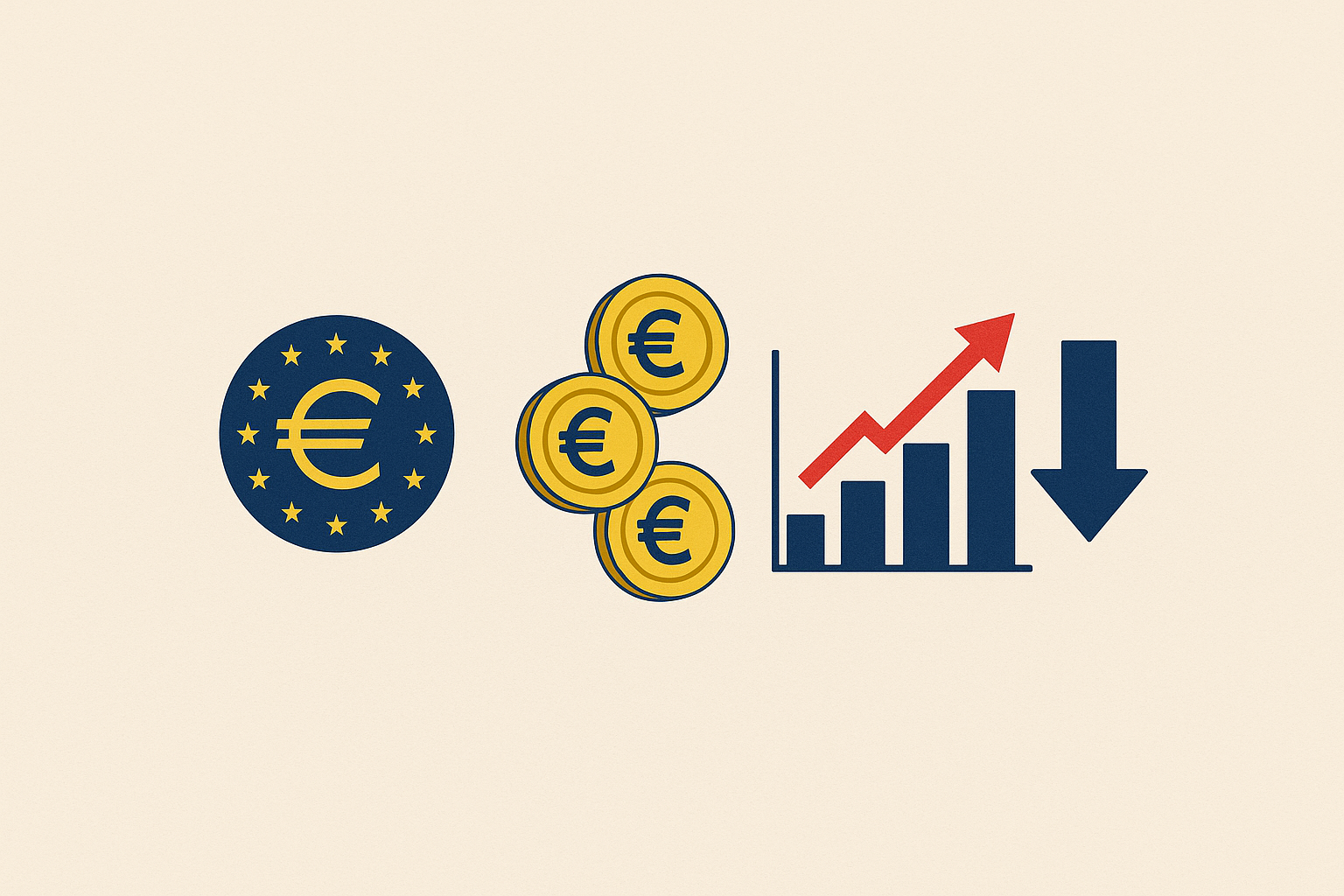Introduction
The European Central Bank (ECB) has decided to maintain its current interest rate levels during its latest policy meeting in June 2025. While this move was widely anticipated by analysts and market observers, the central bank’s accompanying statements have sparked considerable interest across the global financial landscape. Most notably, the ECB has opened the door to a potential rate cut later in the year, a shift in tone that could have wide-reaching implications for the Eurozone economy, capital markets, and the euro currency itself.
This decision reflects the ECB’s cautious optimism in balancing economic growth with its long-standing commitment to price stability. Although inflation in the Eurozone remains above the ECB’s target, it has shown signs of moderation in recent months. This evolving inflation trend appears to have given policymakers the confidence to pause further rate hikes and begin preparing for a more accommodative stance in the near future, should economic conditions allow.
The Current Monetary Policy Stance
As of June 2025, the ECB’s key interest rates remain at levels set during the final quarter of 2024. These rates include the main refinancing operations rate, the marginal lending facility rate, and the deposit facility rate. Throughout much of 2023 and 2024, the ECB adopted an aggressively hawkish approach to curb surging inflation following the post-pandemic economic recovery and energy price shocks tied to geopolitical tensions.
However, recent economic data suggests that inflation is gradually declining toward the ECB’s target of 2 percent. The most recent consumer price index (CPI) figures for the Eurozone showed a headline inflation rate of 2.6 percent in May, down from 3.1 percent earlier in the year. Core inflation, which strips out volatile food and energy prices, also eased to 2.4 percent.
Given these indicators, ECB President Christine Lagarde noted during the post-meeting press conference that while current interest rates remain appropriate, the governing council is “prepared to adjust all instruments as needed” to achieve its price stability mandate. Lagarde emphasized that any rate cut would be data-dependent and subject to further confirmation that inflationary pressures are sustainably declining.
Why The ECB Is Signaling A Shift?
The ECB’s subtle shift toward a more dovish tone is driven by multiple factors. First and foremost, inflation is decelerating faster than anticipated. This has eased the immediate pressure on the central bank to maintain a restrictive monetary environment. Second, economic growth across the Eurozone remains fragile. Countries such as Germany, France, and Italy are experiencing slower GDP growth and weakening industrial output. Tight financial conditions have led to reduced consumer spending and corporate investment.
Additionally, the global economic environment is evolving. Central banks in other advanced economies — notably the U.S. Federal Reserve and the Bank of England — have also paused their rate hiking cycles. This synchronized global monetary stance may give the ECB more room to maneuver without triggering significant capital outflows or destabilizing currency volatility.
The ECB’s potential move toward rate cuts later in 2025 is also a recognition of the risks that persist in the financial system. High borrowing costs have strained households and businesses across Europe. By hinting at a future rate reduction, the ECB may be aiming to support confidence in the economic outlook without immediately loosening its policy framework.
Market Reactions And Currency Implications
The financial markets responded swiftly to the ECB’s statements. The euro experienced modest declines against major currencies, including the U.S. dollar and British pound, reflecting the market’s interpretation of a possible shift toward easing monetary policy. Government bond yields across the Eurozone edged lower as traders began pricing in a greater probability of a rate cut by the fourth quarter of 2025.
Equity markets in Europe responded positively, particularly sectors sensitive to interest rates such as real estate, consumer goods, and financials. Investors welcomed the potential for more accommodative policy, which could relieve some of the pressures caused by higher borrowing costs.
Forex traders are now closely monitoring economic data releases from the Eurozone, particularly inflation, employment, and industrial production figures. The ECB’s communication has made it clear that any future action will be contingent on these metrics showing continued improvement. In this environment, volatility in the EUR/USD and EUR/GBP pairs is likely to increase as speculation grows around the timing and magnitude of any potential cuts.
Comparative Central Bank Policies: Global Outlook
In comparing the ECB’s policy trajectory with other major central banks, some interesting dynamics emerge. The U.S. Federal Reserve recently decided to hold rates steady, citing stable inflation but ongoing labor market strength. While the Fed has not ruled out additional hikes, its tone has become more neutral, and markets now expect the next move could be a cut in early 2026 if current conditions persist.
Meanwhile, the Bank of England has kept a similar stance, maintaining its base rate while watching closely for signs that inflation is under control. The Bank of Japan remains an outlier, with ultra-loose monetary policy, although it too is facing pressure to normalize as inflation in Japan inches higher and the yen weakens significantly.
These global trends suggest that the major central banks are reaching a common inflection point. The post-pandemic rate hiking cycle is approaching its end, and policymakers are now evaluating the next phase — one where economic stability takes precedence over inflation control. For the ECB, this means walking a tightrope between keeping inflation expectations anchored and avoiding unnecessary economic stagnation.
Challenges Ahead For The ECB
Despite the improving inflation outlook, the ECB still faces several challenges that could complicate any future decision to lower rates. Energy prices remain volatile, especially amid uncertainty in global oil and gas markets. Geopolitical tensions, including ongoing disruptions in Eastern Europe and the Middle East, continue to pose risks to supply chains and price stability.
Furthermore, wage growth in the Eurozone is showing signs of persistence, particularly in sectors such as manufacturing and healthcare. If wages rise faster than productivity, they could reignite inflationary pressures, forcing the ECB to delay or reconsider its plans for rate easing.
Another challenge is political uncertainty within the European Union. Several member states are facing elections or leadership transitions in the second half of 2025. Political instability could impact fiscal policy coordination and investor confidence, both of which influence the ECB’s policy calculus.
Conclusion
The ECB’s decision to hold rates steady in June 2025, paired with hints at possible cuts later in the year, marks a critical juncture in its monetary policy strategy. With inflation gradually receding and economic growth remaining sluggish, the central bank is preparing to pivot toward a more supportive stance — albeit cautiously and conditionally.
For investors, analysts, and policymakers, the months ahead will be pivotal. Every data point — from inflation to wage growth and industrial output — will feed into the ECB’s decision-making. Market participants should expect heightened volatility and adjust their strategies accordingly.
As the ECB balances its dual mandate of price stability and economic support, its future decisions will not only shape the trajectory of the Eurozone economy but will also send ripples across global financial markets. The delicate process of transitioning from policy tightening to potential easing will test the institution’s credibility, communication, and policy precision.


